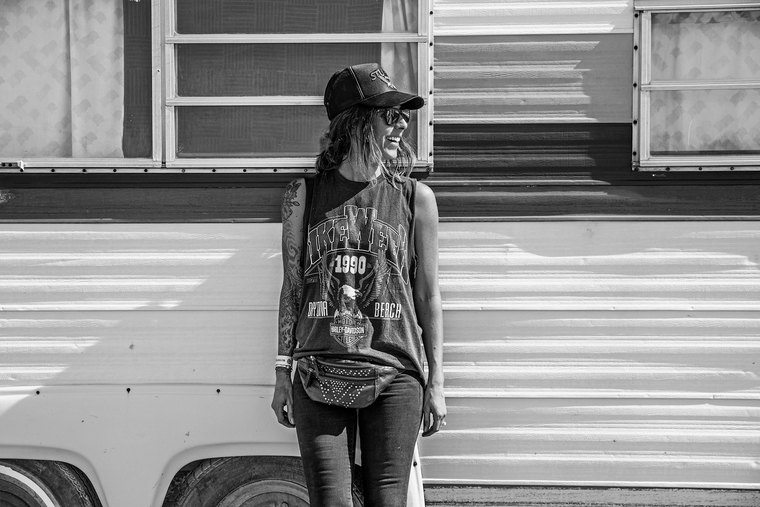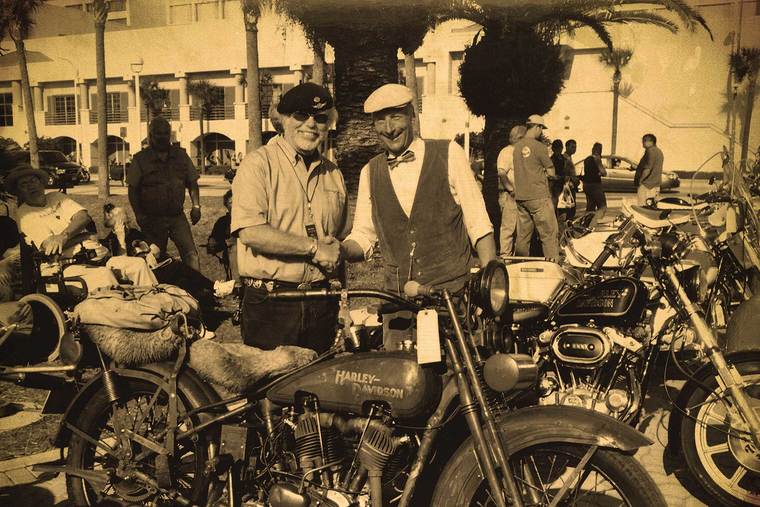Beyond the tourist trap
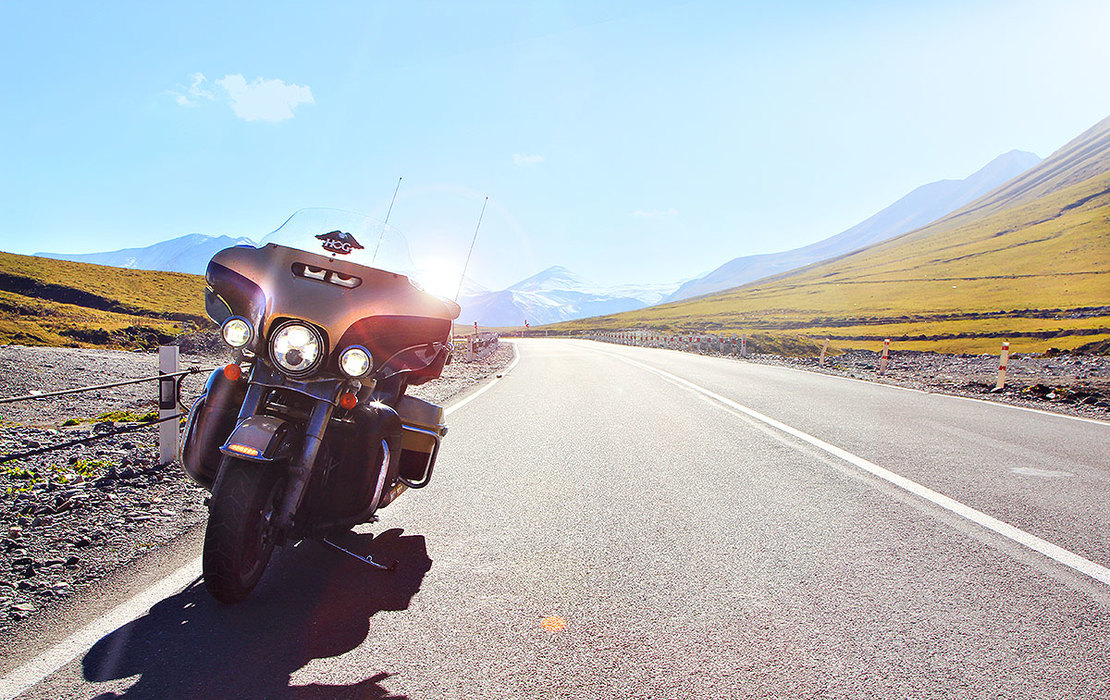
Sergey Kamenev set out on a two-wheeled odyssey from Russia in search of the real Turkey
To the uninitiated, a trip to Turkey may be associated with a couch-potato stay in a hotel, endless food and drink, and lounging by the pool in the proximity of inebriated holidaymakers. I travelled to Turkey on my Harley- Davidson® with the intention of debunking this depressing myth and seeing the country as it really is, and not as it is seen by many tourists.
The cold breath of autumn had already re-coloured the leaves on the trees, and tearful rains were mourning the departing summer. In this kind of weather you really don’t want to stay at home with the risk of succumbing to the melancholy that is so characteristic of this time of the year. That is why I decided to set out for warmer climes. The idea behind the journey was simple: take a dip in the sea, see the most beautiful places in Turkey and return before the first winter snows. As I wanted to make my trip as rich in impressions as possible, I purposely didn’t prepare a precise route, but rather marked out a few ‘must visit’ points.
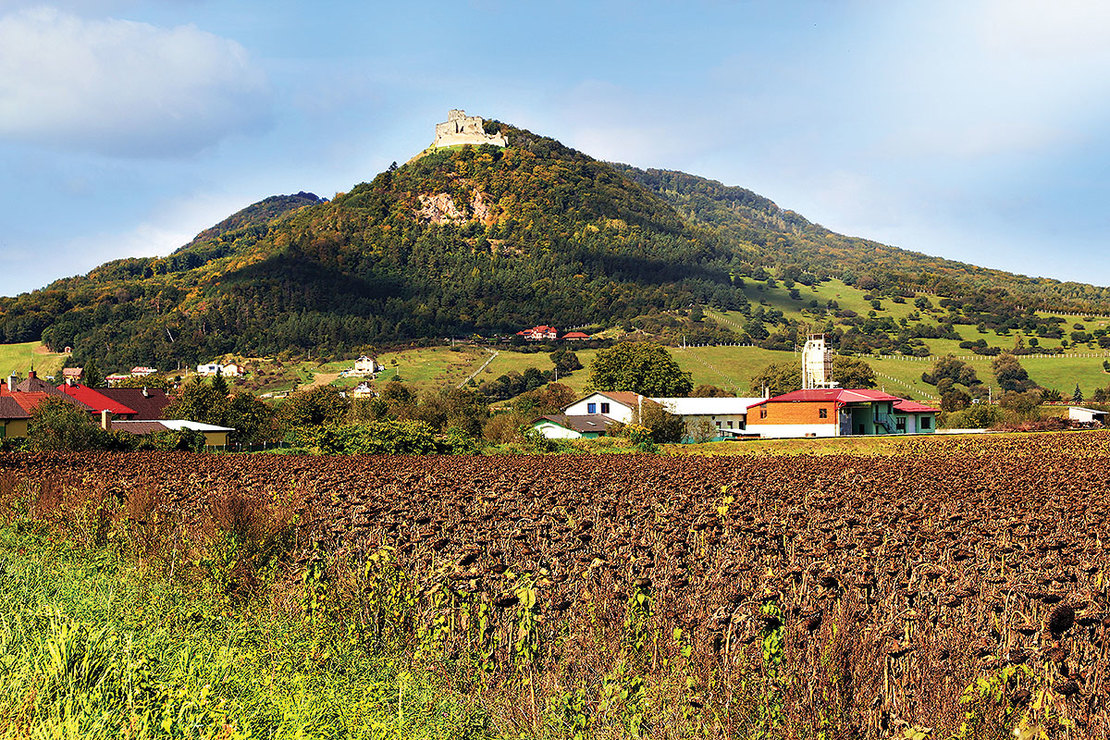
My route passed through Eastern Europe – Poland, Slovakia, Hungary, Romania and Bulgaria – to western Turkey, where I would pass via Istanbul down to Antalya and continue further inland to visit the famous region of Cappadocia and then Mount Nemrut near the border with Syria, and finally the monastery of Sumela in the north-west of the country. I would return to Russia through Georgia and be home before the roads were covered with ice. I passed through Belarus, Poland and Slovakia and Hungary without incident, and around lunchtime on the third day of my journey I ended up at the border with Romania.
In addition to the stunningly beautiful countryside, I think that one of the features of Romania is the number of winding roads. Here you can really enjoy taking every turn on the bike, but you have to watch out for cows that may come heedlessly ambling just around the next bend on a tight curve.
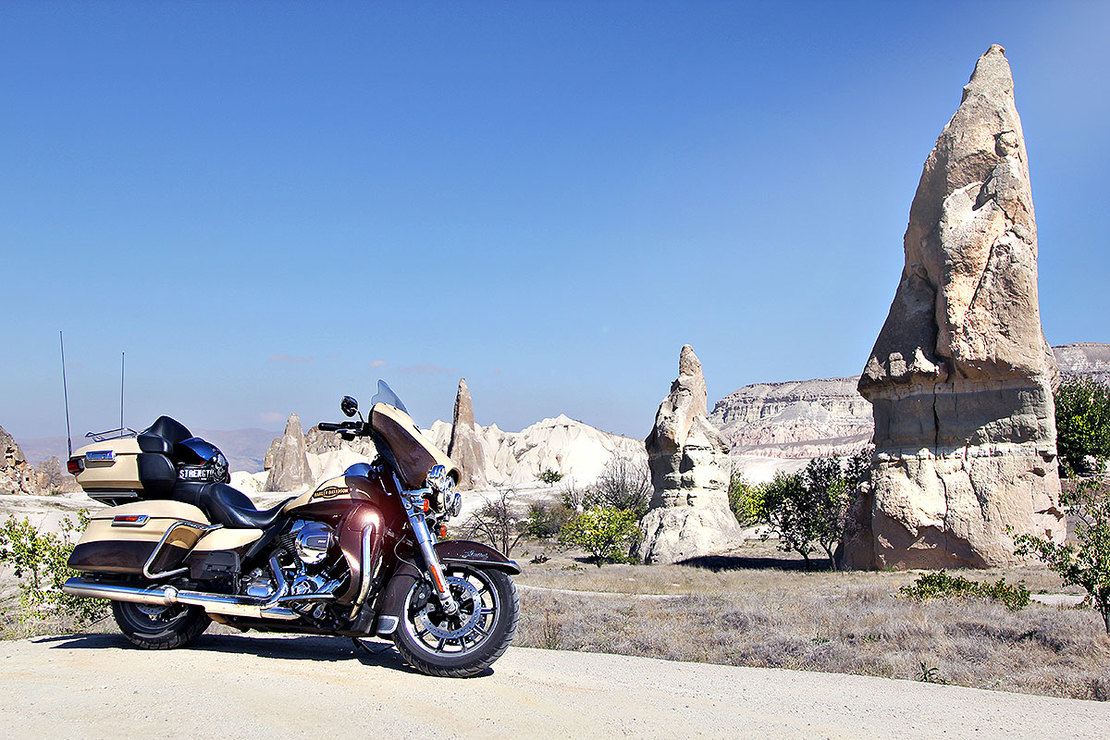
Some 30 kilometres from the city of Brasov stands Bram Castle, which attracts tourists at all times of the year because of its links with the legend of Dracula, and the novel of the same name by Bram Stoker. The details describing the vampire’s lair bear a remarkable resemblance to Bram Castle.
The small castle has little more than half a dozen rooms connected in a labyrinth, and in the courtyard there is a spring that, according to legend, leads deep down into underground labyrinths.
However, in reality it appears to have almost nothing to do with the bloodthirsty count.
The border with Bulgaria welcomed me with a beautiful sunset over the long bridge across the Danube, and it was the first place where I managed to speak Russian; the Bulgarian frontier guards speak our language pretty well, and were very friendly, so the whole process took no more than 20 minutes. From the first few kilometres I felt I had been transported in a time machine to 25 years ago: in the border towns I was surrounded by apartment houses with prefabricated panel walls, and tall weeds in the vacant lots, reminding me of Moscow in Soviet times or the Perestroika period. I cannot boast of any observations of nature because I crossed most of Bulgaria in complete darkness, due to the absolute absence of lighting, even on main roads. The road signs were produced with the Cyrillic alphabet, which sometimes reinforced the feeling that I was somewhere in a far-flung Russian province. Another thing that made a strong impression was the abrupt change from asphalt to cobbles, right in the middle of the main highway, especially considering the somewhat unbalanced feeling of hurtling on to stones polished by time and appearing from nowhere in the middle of the forest!
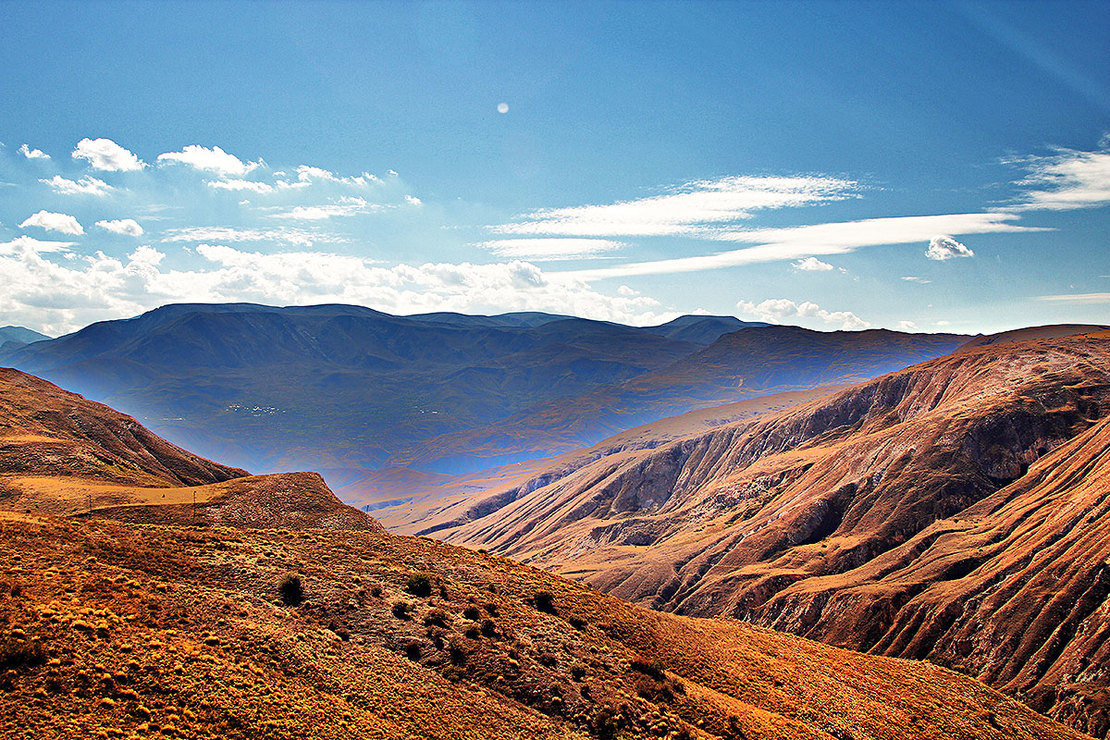
Closer to the Turkish border I was very happy that I’d stopped the night before, because the road almost disappeared. The border crossing was completed quickly, without much delay or questioning. The wide highway to Istanbul opened out before me. The unexpectedly wide and good road enabled swift progress, and I soon reached the Istanbul orbital highway, with terrifying jams and dangerous traffic.
This is where I discovered that Turkey is a tough school for the motorcyclist; local drivers have not accepted the custom of letting in a motorcycle between the traffic lanes, even if it’s a big, expensive Harley®. The beautiful Fatih Sultan Mehmet bridge, more than 1.5km in length, is suspended at a height of 150m above the Golden Horn – the strait that connects the Black Sea with the Sea of Marmara. Leaving the dense metropolis traffic behind me, I headed towards Antalya.
There, hell broke loose. The extremely dense traffic gave no possibility of squeezing in between the cars, and the severe traffic jams totally exhausted me. To top it all, the asphalt was as slippery as ice, so I often had to use the ABS in order to stop just behind the rear bumper of the car in front. I have encountered asphalt like this in North Africa – its appearance is very smooth and sleek, but there is a treacherous glitter from the polished gravel that is added to the mix to preserve the road shape under the hot sun.
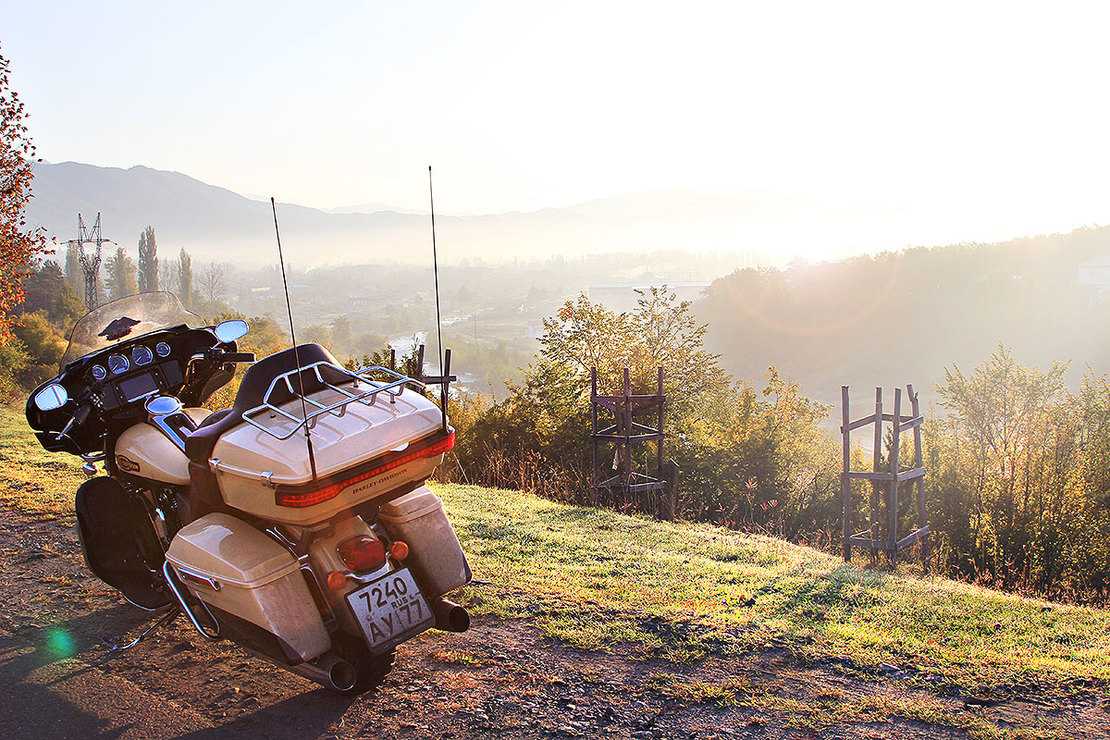
Finally, late at night, I arrived in a kingdom of pathos and gluttony. The hotel where I was staying belonged to the former owner of Cherkizovsky Market and was decorated in a style of garish luxury. I enjoyed a cigar on the balcony under the starry sky, and a feeling of unaccountable happiness at having successfully completed the first stage.
The next destination point on my route was the town of Ürgüp in Cappadocia. This region is extremely interesting because of its unusual landscape and peculiar rock formations that look like columns with sharp ends. They reminded me of spearheads pointing at the sky, although the local inhabitants have dubbed one of the valleys ‘Penis Valley’ – well if that’s the way they want to sell it…
Cappadocian history dates back to 2,000 years BC, and many nations and religions went through the area, leaving behind a legacy of rock cities carved out of the depths of the mountains. The stone – named ‘tuff’ – is easy to work, so has provided the local residents with an opportunity for building dwellings in the cliffs.
I highly recommend anyone travelling in the region to stay overnight in a rock hotel, of which there are many. The hotel I chose had been built according to ancient construction standards, and all its rooms were furnished in a classic medieval style. Very interesting!
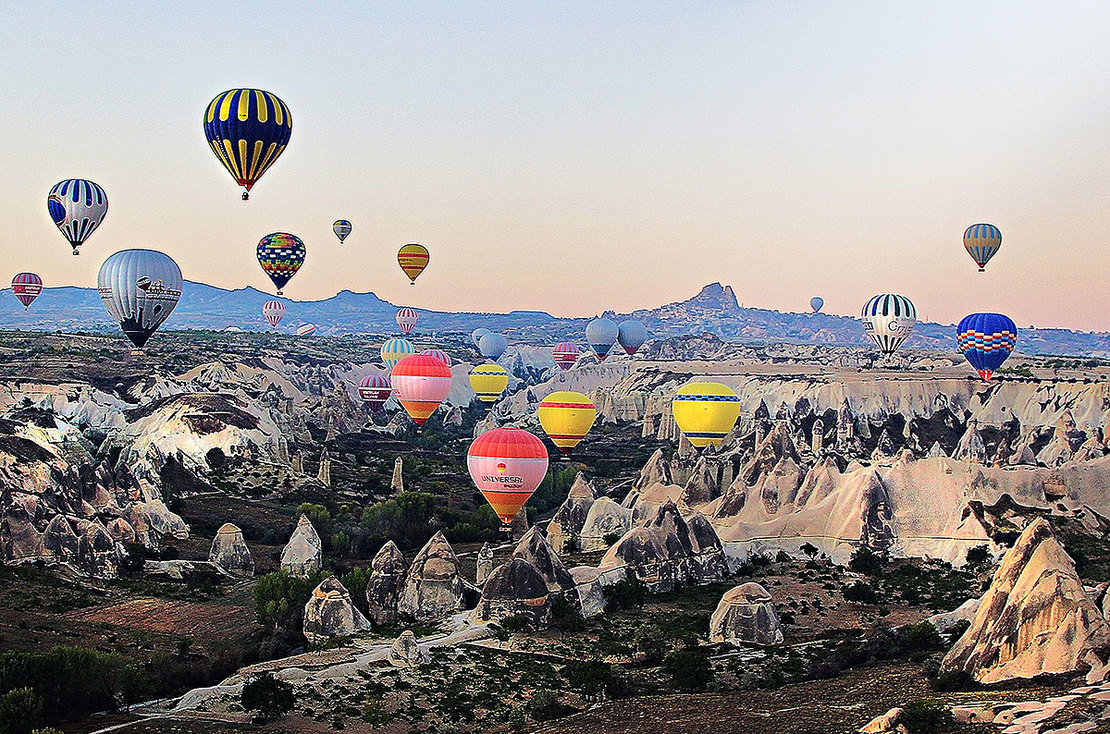
I started the next day, like the previous ones, before dawn. This time, though, the reason for getting up early was quite different. One of the most popular entertainments in Cappadocia is to greet the dawn in a the basket of a hot-air balloon, a spectacle that I just could not miss.
This experience can be purchased in pretty much any hotel. Before dawn, minibuses collect the flyers from the hotels and transport them to the launch site in the valley. There, one after another, balloons soar upwards into the heavens. This was my first experience flying in a hot-air balloon, and it was quite amazing. Due to the complex structure of the aircraft, even the launch was a spectacle in itself.
Each passenger took a seat near the side of the basket, allowing them to take photos or film without interruption. The balloon rises to a height of 500 to 800 metres, but probably the most mesmerising vision is the simultaneous flight of hundreds of these multicoloured spheres in the sky, over a horizon that is slowly turning pink. A flight lasts about two hours, during which time you can observe the sun rising over the bizarre rock formations, breathing fresh air and exploring the surrounding scenery without removing your finger from the camera shutter button, because every moment brings a new unforgettable picture.
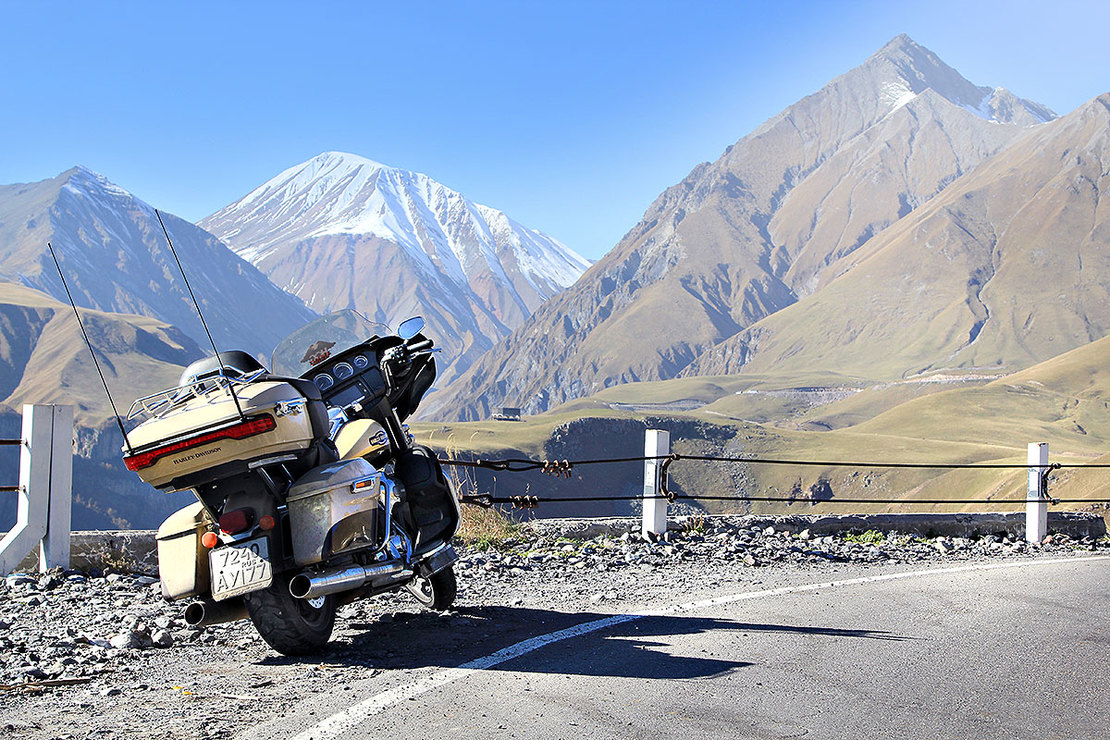
All the participants got a glass of champagne and certificates to show that they really had spent two hours in the sky above Cappadocia. This is probably the first sightseeing trip in my life that was worth every cent I paid!
Next, I had a quick look round one of the many rock towns. In order to reach it, I had to leave the asphalt and continue my way on a sand and earth road. That gave me a thought that was ingenious in its simplicity. There are tours arranged for those who want to visit the beautiful places of Cappadocia on dirt tracks using ATVs. I decided that this was my chance to visit these marvellous places and take photos of the bike against this ‘off-road’ background.
As a whole, this route provided a great deal of fun, from the surrounding scenery to the clouds of sand billowing in the rear-view mirrors. I tempered my enthusiasm to suit the kind of bike I was riding, but I still couldn’t deny myself the pleasure of overtaking a group of Chinese tourists on quad bikes who immediately reached for cameras and mobile phones to photograph my Russian number plate disappearing into clouds of dust.
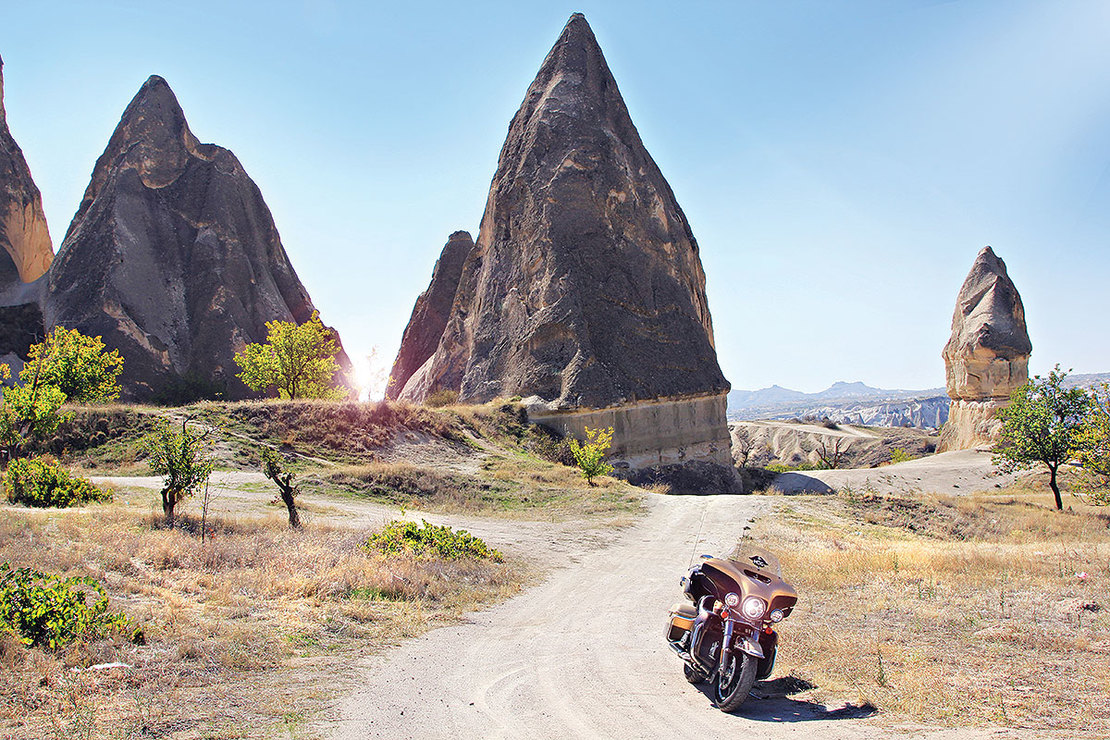
Back on the asphalt road, I decided it was time to move on to the south-eastern part of Turkey. After climbing to an altitude of 2,200 metres on breathtaking serpentine roads, sometimes gravel-surfaced, I found myself in a parking area near the top of Mount Nemrut. To reach the main point of interest you still have to make the difficult climb to the top.
After breakfast, I checked out of the hotel and went to explore the surrounding area. There are so many interesting places that not even a week would be enough to see everything. As I didn’t have much time, I set my priorities. After taking a few panoramic shots from the observation platform, I went to the rock castle of Uchisar – the highest point in Cappadocia, a natural rock formation that looks like an enormous chunk of cheese nibbled by mice. This structure was used by the Byzantines as a look-out tower, from which which lasts about half an hour. This is where Antiochus I, ruler of the kingdom of Commagene, erected a complex of monuments in the first century BC. According to scientists, there is a tomb surrounded by huge statues, nine metres high. The centre of the tomb at the top of the mountain is a 50-metre burial mound of small stones. The king’s tomb itself has not yet been found. There are sculptures depicting Zeus, Apollo, Heracles, Aphrodite and Antiochus himself, all of them executed in the Persian style. On the western terrace there are massive panels depicting the king, welcoming the gods.
This place has a special power, not hostile but a little oppressive – the stone idols look very sullenly at the uninvited guests. One’s mind cannot comprehend how these statues appeared on the mountain top without roads or technology. It is difficult to believe that they were made on site, because the stone from which they are carved differs from the type of rocks on the mountain.
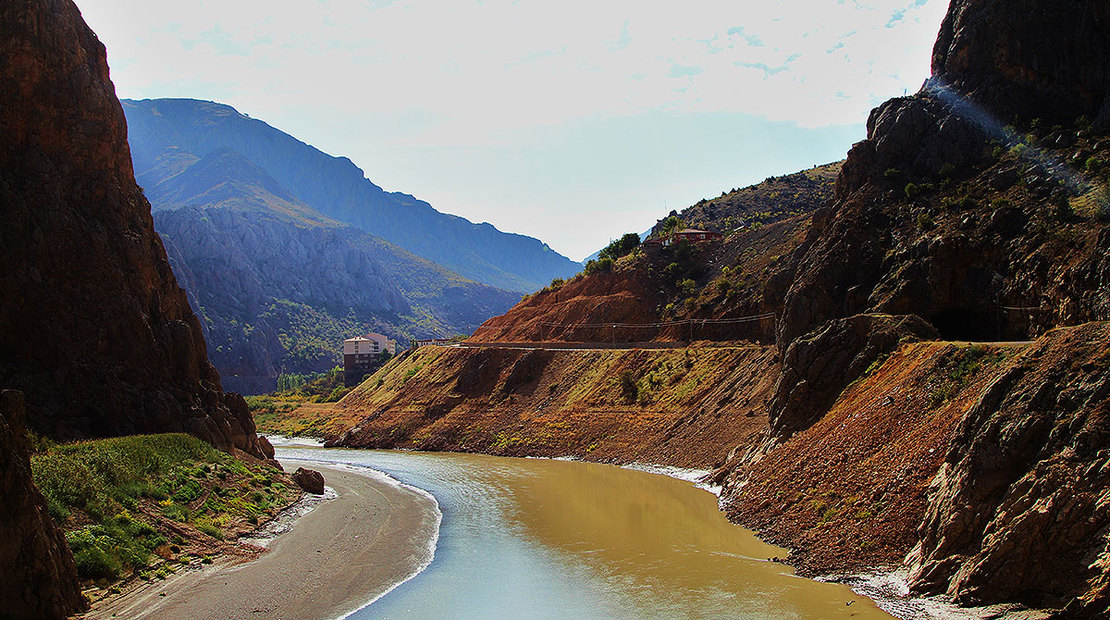
AUTUMN ARRIVES
As I moved towards the north of the country, the summer weather took on more and more signs of autumn: the leaves on the trees turned yellow, the sky thickened with clouds and it started drizzling. By the time I reached Macka the rain had turned to a downpour, and it was clear that it would be utterly pointless visiting the mountain monastery in such weather.
I settled into a very decent hotel, surrounded by tourist buses from which sleepy passengers emerged.
Early next morning, after breakfast in the company of German grannies, I decided to go to the top of the mountain to view the Sumela monastery. There was no rain and the weather was quite good, although a bit foggy. The 16km of serpentine mountain road just flew by and, leaving my motorbike in the car park, I went to explore the area. If someone had shown me photographs of that place and asked in which country the photos had been taken, Turkey would be the last place I would have said. Cliffs covered with dense pine forest, grey skies through which the sun was only occasionally able to break, mists hanging in the valley below, dense clouds clinging to the mountain tops – it looked more like Norway or Switzerland.
The orthodox Christian monastery of Sumela was constructed on chalk cliffs in the 4th century AD. The most beautiful view is from the observation platform overlooking the mountains, and the path leading up to the monastery through the roots of ancient trees and moss- covered rocks is stunning.
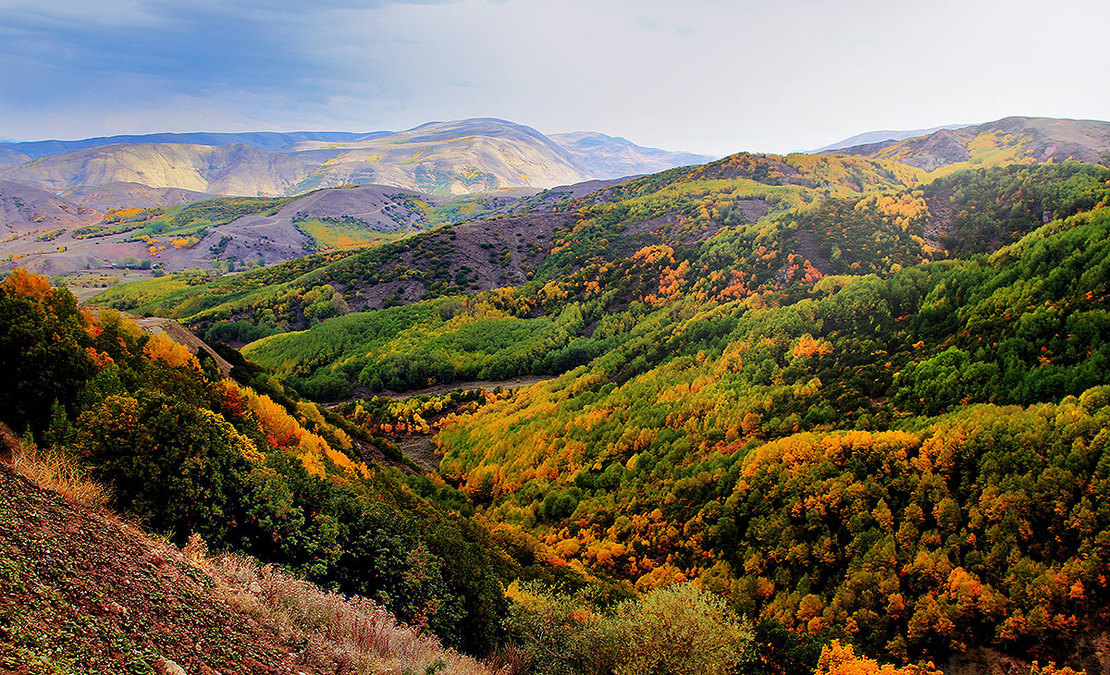
After that, I moved on to Trabzon, a small harbour town on the Black Sea that was once a very large trading and fishing port. Its importance decreased due to the newer harbour in the city of Samsun. However, Trabzon still continues to receive tourist cruise ships, primarily due to its proximity to key historical sites. The city itself has a very rich history and is rooted deep in antiquity.
Founded by the Greeks in the 8th century BC, the city has changed owners repeatedly, and been destroyed several times. It was occupied by the Greeks, the Byzantine Empire, and Goths, Armenians, Persians, Turks and was once even taken by Russian troops. The city has absorbed a variety of cultures, which are reflected in the architecture and the local cuisine.
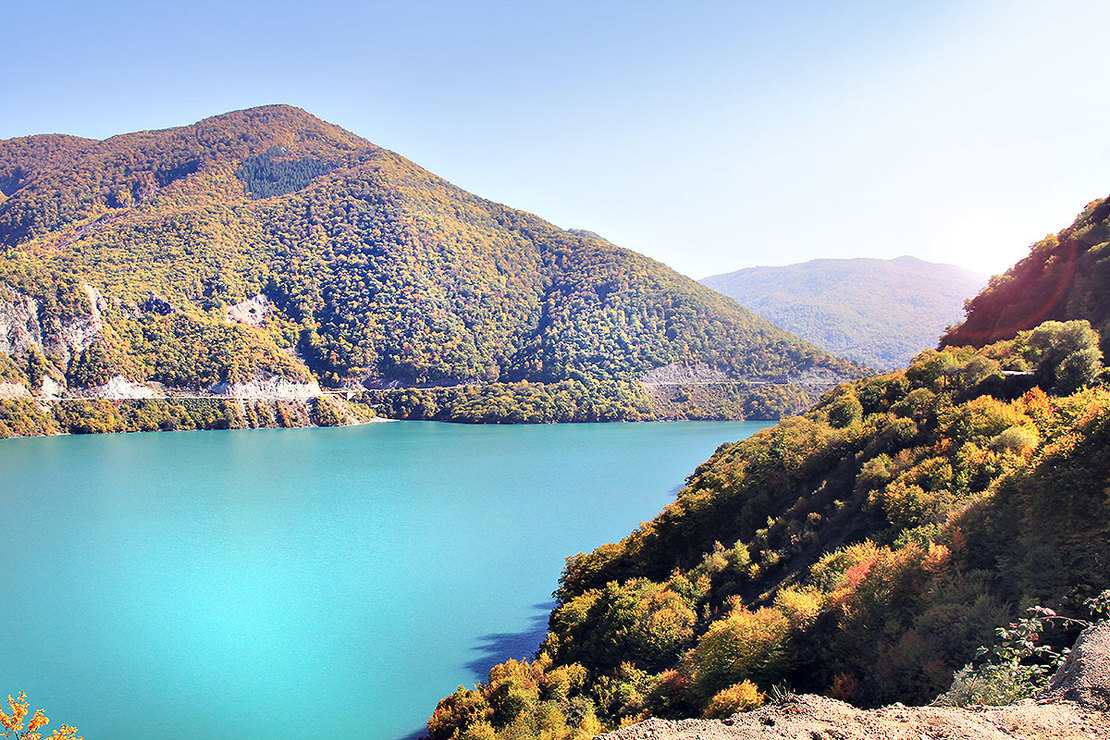
The journey back home via Georgia and Russia was comfortable: miraculously escaping autumn rains, I got back dry and even warm (thanks to the heated grips!). I was entirely satisfied with my journey, the route, my adventures and, of course, the motorcycle. It had provided me with such comfort and confidence, and had turned out to be a trusty friend, not only on the asphalt but also off-road. The special status and reverent attitude shown to a traveller on a machine of this marque never ceases to inspire me.
This mini-tour to Turkey is evidence that the stereotypes we have created about different places or countries arise merely because of narrowness of mind and a lack of vision of the real picture.
Rediscover familiar countries for yourself. Leave the highways for the secondary roads, get acquainted with the locals, discover their way of life, try their food, and in this way you will become spiritually richer and get to know the world as it is, and not as we see it from the couch in front of the TV.


